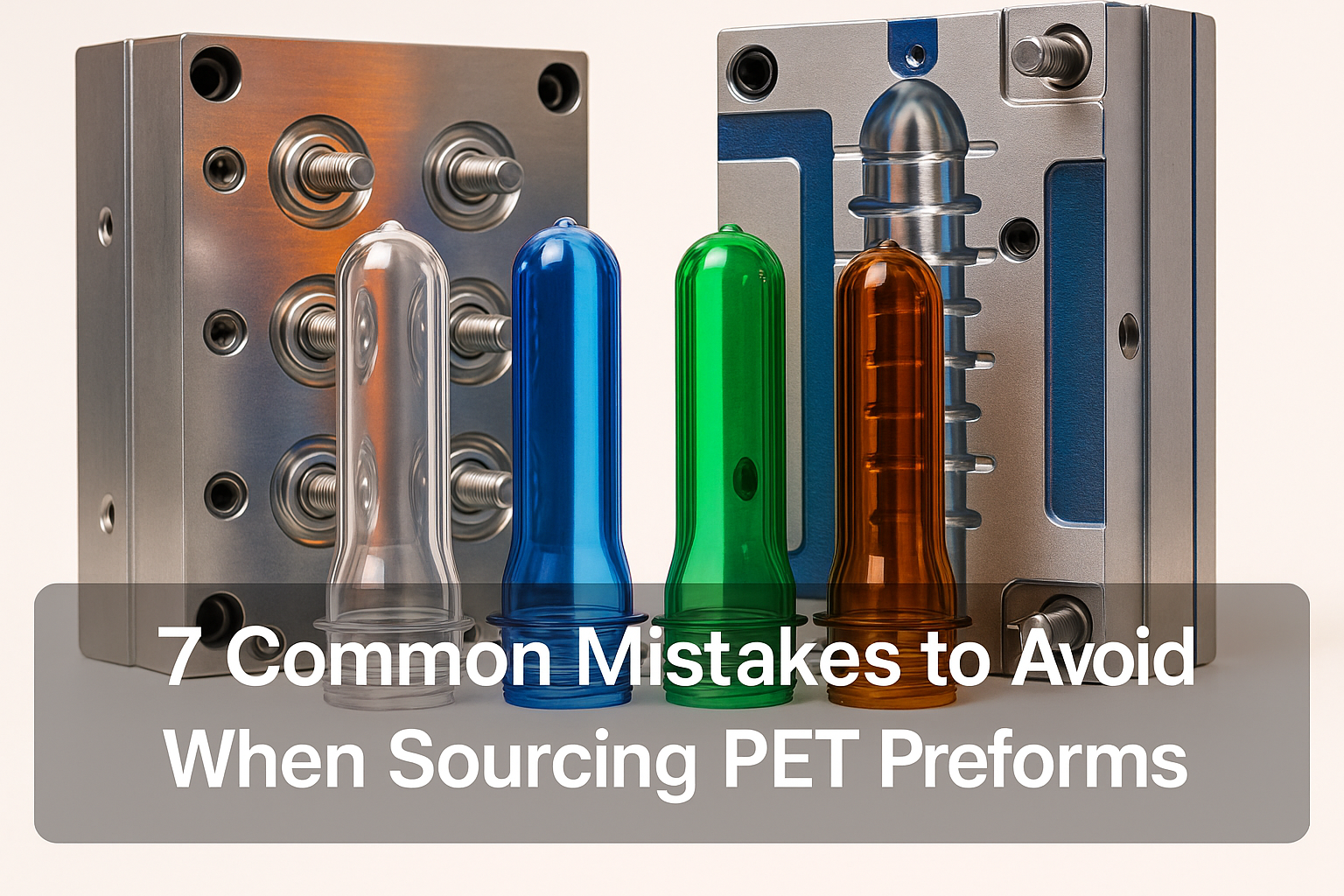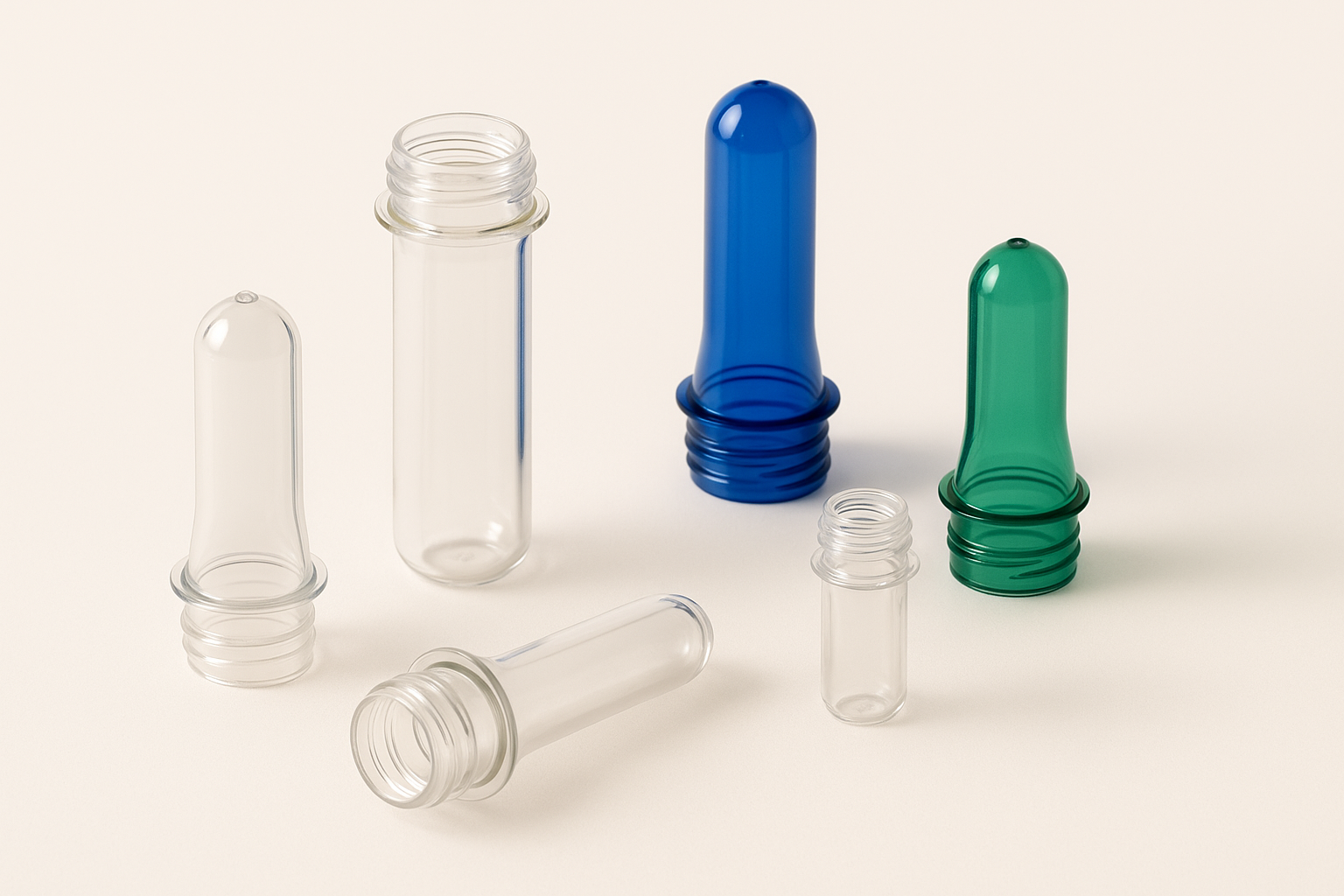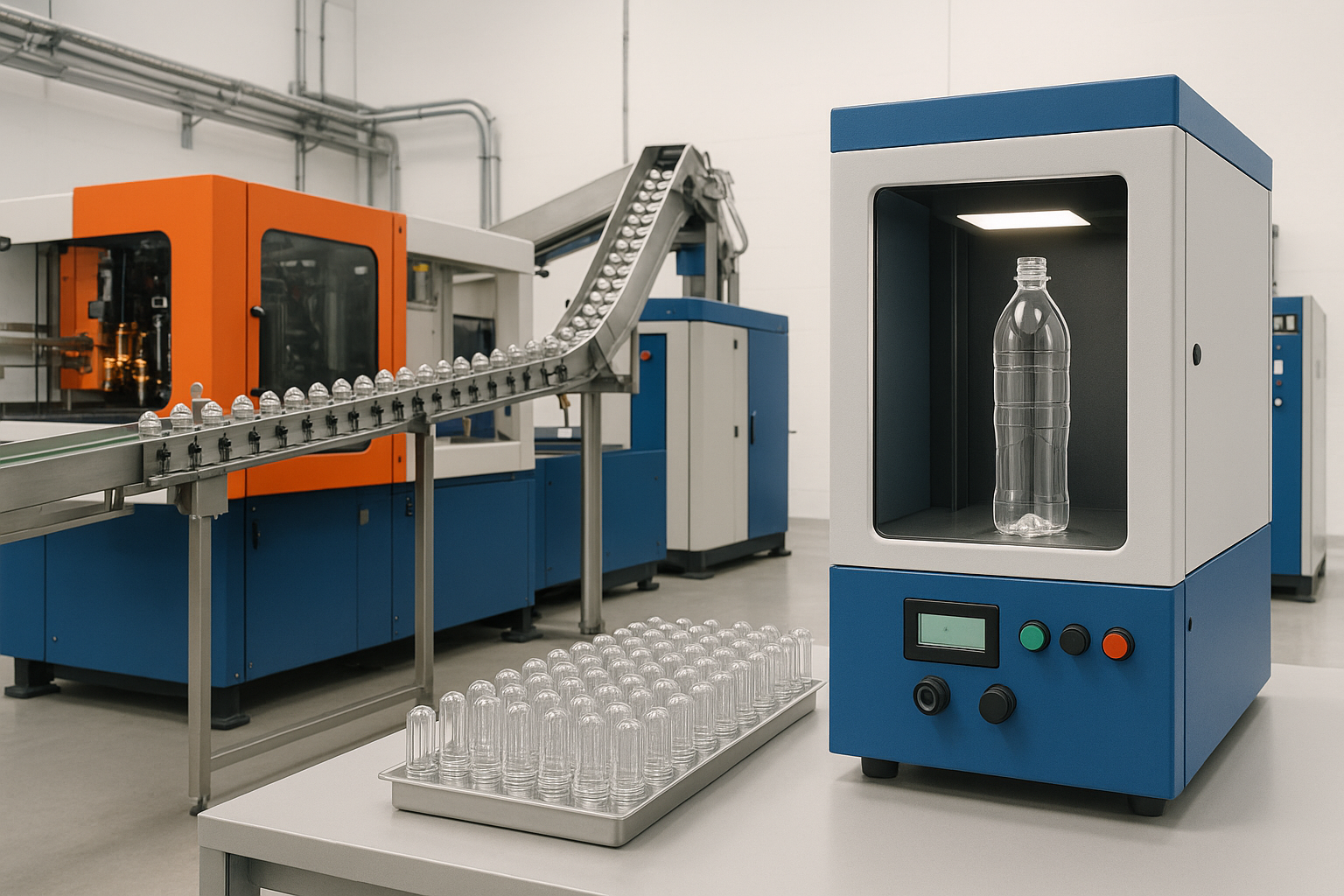7 Common Mistakes to Avoid When Sourcing PET Preforms

In India’s booming packaging industry, PET preforms are a crucial starting point. They are the small, test-tube-shaped plastic pieces that get blown into bottles. Think of them as the foundation for your water bottles, soft drinks, edible oil containers, or pharmaceutical packaging. If this foundation is weak, your entire product line can suffer.
Many businesses, from small startups to large manufacturers, face challenges when sourcing these essential components. A tiny oversight can lead to huge problems. These problems include production delays, poor product quality, and even damaged brand reputation. But what are these common pitfalls?
This guide will walk you through 7 critical mistakes to avoid when you are sourcing PET preforms. We’ll help you ensure a smooth, efficient, and cost-effective supply chain. By understanding these issues, you can make smarter procurement decisions for your business in India.
The 7 Critical Mistakes to Avoid When Sourcing PET Preforms
Mistake 1: Neglecting In-Depth Supplier Vetting
The biggest mistake is choosing a supplier based only on the lowest price. Many businesses don’t properly check their background. This can be a huge risk.
The costly consequences include inconsistent quality, delayed deliveries, and poor communication. You might even find your supplier isn’t financially stable, putting your entire production at risk.
The Solution:
- Do your homework: Conduct thorough checks. This means site visits, financial audits, and asking for references from their other clients.
- Verify Certifications: Always ask for relevant certifications like ISO 9001 (for quality management) and FSSC 22000 (for food safety). For food or pharma packaging, FDA/EU compliance is also key.
- Assess Capacity: Make sure the supplier can handle your order size and deliver on time consistently.
Mistake 2: Ignoring Technical Specifications & Compatibility
Each type of PET bottle needs a very specific preform. Failing to define these details precisely is another common error. You must ensure the preforms work perfectly with your blow molding machines and your end product’s needs.
Imagine placing a massive order, only to discover the preforms don’t perfectly fit your blow molding machines. This leads to high scrap rates during production and frequent machine stoppages. The final bottles might have incorrect volume, weak walls, or poor barrier properties, which can spoil your product inside the bottle.
| Specification Detail | Description / Typical Values | Importance |
|---|---|---|
| Material Type | Food-grade Virgin PET Resin (e.g., IV 0.80 ± 0.02 dl/g) or Recycled PET (rPET) | Determines mechanical strength, clarity, and suitability for various contents (food, pharma). |
| Preform Weight | Typically 10g to 70g (± 0.1g tolerance) | Directly impacts the final bottle’s volume, wall thickness, and material cost. |
| Neck Finish Standard | PCO 1810, PCO 1881, 28/410, GME 30/41, 38mm 3-Start, 48mm, 52mm | Ensures compatibility with caps, closures, and blow molding machine mandrels. |
| Preform Color | Transparent (Clear), Blue, Green, Amber, Custom colors | Affects product presentation and UV light protection for contents. |
| Intrinsic Viscosity (IV) | 0.76 – 0.85 dl/g (for standard preforms) | Indicates the molecular weight and strength of the PET polymer, critical for blowing. |
| Barrier Properties | Standard, UV Blocker, Oxygen Scavenger, Multi-layer | Essential for preserving product freshness, especially for sensitive beverages, oils, or pharmaceuticals. |
| Crystallinity | Low crystallinity in the body for optimal blowing, higher in the neck for strength. | Affects preform transparency, mechanical properties, and blowing window. |
| Dimensions (Overall Length) | Varies based on weight and neck finish (e.g., 85mm to 140mm) | Ensures proper fit and handling in blow molding equipment. |
| Certifications | ISO 9001 (Quality), FSSC 22000 (Food Safety), FDA/EU Compliance, GRS (Recycled Content) | Guarantees adherence to quality, safety, and sustainability standards. |

The Solution:
- Provide Detailed Specs: Give your supplier exact details: preform weight, color, neck finish, and barrier requirements. For instance, choosing the correct PET preform type for your specific bottle design is a technical detail you cannot ignore.
- Consult Experts: Talk to your own engineers and the supplier’s technical team. They can help match the preform to your exact needs.
- Test Samples: Always conduct extensive trials with samples on your actual production line before placing a large order.
Mistake 3: Underestimating Quality Control & Assurance Protocols
Many businesses assume good quality or only check the final product. This is a mistake. Quality needs to be managed at every step of the process, not just at the end.
If quality control (QC) is weak, you’ll see inconsistent batches. Major production defects can arise, leading to product recalls and damage to your brand. It also means a lot of wasted material and money.

The Solution:
- Implement Incoming Checks: Inspect preforms as soon as they arrive at your factory.
- Request Documentation: Always ask for a Certificate of Analysis (COA) and other inspection reports from your supplier. These documents show the preform’s properties.
- Define AQLs: Establish clear Acceptable Quality Limits (AQLs) in your contracts. This specifies the maximum number of defects you will accept in a batch.
Mistake 4: Overlooking Logistics & Supply Chain Risks
Focusing only on the price of the preforms at the supplier’s factory (FOB price) is a big mistake. You must also consider how they will reach you. This includes lead times, shipping methods, customs clearance, and potential global issues.
Ignoring these factors can lead to serious production delays. You might end up holding too much inventory, facing unexpected stockouts, or receiving damaged goods. Unexpected customs duties can also inflate your costs.
The Solution:
- Evaluate Logistics: Check the supplier’s track record for on-time delivery. Understand the shipping routes and potential bottlenecks.
- Understand Incoterms: These are international rules that define who pays for what and who is responsible for the goods at each stage of shipping. Make sure you understand them clearly.
- Build Buffer Stock: Keep a small extra supply of preforms to handle any unexpected delays.
- Diversify Suppliers: Consider having more than one supplier to reduce risk if one faces issues.
Mistake 5: Failing to Consider Sustainability & Recycled Content
Today, consumers and governments are increasingly focused on sustainability. Sticking only to virgin PET (new plastic) without looking into recycled options or lightweight designs can put your business behind.
This mistake can lead to missed market opportunities, negative public perception, and an inability to meet new environmental regulations. It also means a higher carbon footprint for your products.
The Solution:
- Inquire About rPET: Ask suppliers about rPET (recycled PET) preforms. Find out what percentage of recycled content they can offer and its quality.
- Explore Lightweighting: Work with suppliers to see if preforms can be designed lighter without compromising strength. This saves material and cost.
- Check Certifications: Look for certifications like GRS (Global Recycled Standard) for recycled content verification.
Mistake 6: Prioritizing Price Over Value and Partnership
Always chasing the absolute lowest price is a trap. While cost is important, a rock-bottom price often means compromised quality, poor service, or an unstable supply chain in the long run.
This approach can lead to higher overall costs due to defects, rework, or expensive rush shipments. It also prevents you from building a strong, collaborative relationship with your supplier. You might miss out on their innovation and support.
The Solution:
- Total Cost of Ownership (TCO): Look beyond the unit price. Calculate the “Total Cost of Ownership” which includes quality, service, logistics, and potential risks.
- Build Relationships: Focus on developing long-term partnerships with suppliers. A good partner offers more than just a product; they offer support and solutions. Partnering with the right supplier who understands your unique needs, like for specific GME 30/41 PET preform specifications, is key.
- Value-Added Services: Consider suppliers who offer technical support, innovation capabilities, and quick responses to your needs.
Mistake 7: Neglecting Contractual Clarity and After-Sales Support
Relying on verbal agreements or incomplete contracts is risky. Many businesses don’t clearly define terms for product defects, returns, or technical assistance.
This oversight can lead to endless disputes if problems arise. You might have no legal recourse, face operational inefficiencies, and suffer extended downtime. This often happens when there’s no clear path for issue resolution.
The Solution:
- Draft Clear Contracts: Ensure your contracts are comprehensive. Include Service Level Agreements (SLAs) that define expected performance.
- Define Terms for Defects: Clearly state how quality defects will be handled, including return policies and remedies.
- Specify Support: Outline warranty periods and how the supplier will provide technical support when you need it.
- Communication Protocols: Establish clear ways to communicate and resolve any issues promptly.
Real Case Studies in PET Preform Sourcing
Case Study 1: Large Beverage Manufacturer Achieves 15% Cost Reduction
A leading beverage manufacturer faced persistent issues with inconsistent bottle weights and high scrap rates, averaging 7-10% of their PET preform usage. The root cause was identified as variability in preform weight and dimensions from their existing low-cost supplier, leading to frequent machine adjustments and rejected bottles on the production line. By implementing a rigorous supplier vetting process (Mistake 1 & 6) and focusing on technical specifications (Mistake 2), they partnered with a certified preform supplier offering tighter tolerances and a robust quality control system. After a 6-month transition period, the manufacturer reported a consistent reduction in scrap rates to under 2% and a significant decrease in machine downtime. This led to an estimated 15% overall reduction in production costs related to PET bottle blowing, demonstrating the value of prioritizing quality and partnership over lowest unit price.
Case Study 2: Pharmaceutical Company Extends Product Shelf Life by 6 Months
A pharmaceutical company encountered challenges with the shelf life of their liquid medication, particularly when exposed to light, despite using seemingly standard PET bottles. Investigations revealed that the sourced PET preforms lacked adequate UV barrier protection, leading to product degradation over time. Recognizing this as an oversight in technical specifications (Mistake 2) and quality assurance (Mistake 3), the company engaged with a specialized PET preform supplier. They collaborated to develop custom preforms incorporating a specific UV blocker additive. Through comprehensive testing and a strict Certificate of Analysis (COA) protocol for incoming goods, the new preforms successfully extended the medication’s shelf life by an average of 6 months. This enhancement not only protected product integrity but also prevented potential costly product recalls and maintained consumer trust.
Case Study 3: Edible Oil Producer Mitigates Supply Chain Risks and Improves Uptime
An edible oil processing company experienced frequent production stoppages and increased inventory holding costs due to unpredictable lead times and occasional stockouts of PET preforms. Their reliance on a single overseas supplier, combined with a lack of clear contractual logistics terms (Mistake 4 & 7), exposed them to significant supply chain vulnerabilities. To address this, they diversified their supplier base to include both local and international partners. They established clear Incoterms in all contracts, defined Acceptable Quality Limits (AQLs), and built a strategic buffer stock based on historical data. Within a year, the company reduced stockout incidents by 90% and improved their production line uptime by 10-12%. The strategic focus on logistics, supply chain resilience, and clear contractual agreements transformed their procurement from a reactive to a proactive system.
Conclusion
Sourcing PET preforms is more than just buying plastic. It’s a strategic decision that affects your entire business, from production efficiency to brand reputation. By understanding and actively avoiding these 7 common mistakes, you can transform your procurement process.
Proactive and informed sourcing turns a potential headache into a significant competitive advantage. It ensures consistent quality, reliable supply, and better cost control for your products in the Indian market.
To ensure you avoid these common mistakes and source high-quality PET preforms that meet your exact needs, reach out to us today for expert consultation and quality products.

